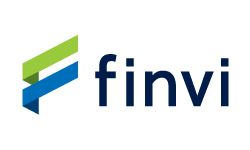By Ohad Samet, Founder and CEO, TrueML
Debt collection is not just ready for change, it is long overdue and perfectly primed for a transformation driven by deep, systemic application of artificial intelligence. With U.S. consumer household debt exceeding $18 trillion and the collection industry valued at over $19 billion, the scale of the opportunity is immense, and so are the structural constraints. The sector remains one of the last frontiers of unaddressed technological and regulatory debt. It is a fragmented landscape of thousands of agencies, many of which are small, family-owned businesses or PE-backed shops operating on an outdated, labor-intensive model based on an outdated mental model.
This traditional “people on phones” approach is collapsing under its own weight. It relies on an army of expensive, high turnover agents, leading to extremely narrow gross margins and making scalability difficult. This isn’t a structure that responds well to changes like Regulation F and shifting consumer preferences that demand digital-first engagement. A handful of collection agencies have already migrated to a digital-first approach, and the most successful are integrating AI to do so and reaping the benefits. But how do these agencies grow quickly against the headwinds of large, legacy clients and resistance to change?
This is where an AI-driven roll-up strategy creates a massive arbitrage opportunity. An AI-native system doesn’t just improve the old debt collection model; it replaces it, rethinks it. By shifting from a manual, high-cost operation to a technology-first platform, gross margins expand, in some cases doubling from the 30s to the 60s. This isn’t a nominal increase; it’s a complete paradigm shift in the industry’s financial structure based on completely different infrastructure.
AI in this case is not referring to the superficial “AI-washing” that is becoming common. This is not about bolting on a chatbot to a legacy website to give agents a first line of support. This is about a programmatic approach to embedding AI deeply into the core of the business’ system, strategy and operations—systemic AI.
The traditional debt collection agency model struggles with scalability, whereas a systemic AI-driven approach is built for it. For example, systemic AI enables migrating millions of consumer records post-acquisition in a single month. This kind of volume would break most traditional agencies or force their service level beyond reasonable standards, but a platform built on an AI engine is designed to absorb this volume without the corresponding headcount bloat.
Here’s what that looks like in practice:
First, dynamic decisioning at scale. From message content and delivery timing to code-based compliance controls and AI payment negotiations, machine learning at the heart of the system ensures a fair and preferred digital experience for consumers that doesn’t require human oversight to execute the strategy.
Second, agent augmentation. AI doesn’t replace agents completely; it elevates them, relying on the most experienced ones while giving them a force multiplier with technology. AI can handle the vast majority of repetitive interactions like consumer email responses or dispute classification. This frees up human teams to focus exclusively on complex, high-value tasks and consumer interactions that require a human touch.
Third, intelligent automation. AI automates the repetitive, manual back-office processes and work. Using a combination of an AI-native platform and robotic process automation (RPA), this isn’t just AI for the sake of AI; it’s rewiring the operational plumbing of the business.
When a traditional agency is acquired and migrated to a systemic AI platform, the result is a staggering difference in efficiency. A traditional agency might handle 10,000—or, if they are evolved, 50,000—accounts per agent. An AI-augmented model operates at a scale of 600,000 accounts per agent and more. That is the power of systemic AI in transforming collection businesses; it enables rapid value creation, driving the majority of margin improvement within the first two to three quarters following an acquisition.
The opportunity with AI-driven rollups for debt collection is clear in the results. TrueML’s first acquisition is on track for a 30%+ internal rate of return (IRR) and grew the market share for a major telecommunications client from just 5% to over 30% in just one year. For our latest acquisition, we are currently tracking 28 distinct initiatives, all aimed at achieving our target margin uplift. The key performance indicator will always be margin expansion, or the ultimate proof that the AI-driven solution is delivering on its promise.
This strategy is about more than just buying companies and market share; it’s about building the next iteration of an industry. The future of debt collection is built on technology; consists of fewer, more profitable agencies; and delivers a personalized digital consumer experience that debt collectors of yesterday never imagined possible.





